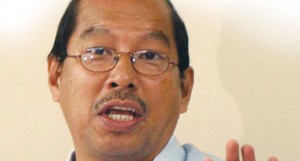MANILA, Philippines — The Department of Budget and Management (DBM) on Monday decried news reports that they supposedly issued nearly a thousand Special Allotment Release Orders (Saros) to lawmakers.
“Judging the DAP by these figures is misleading to the public. When the DBM issues Saros to implementing agencies for legislator-backed projects, that usually involves several Saros all at once. That’s because each allocation under a legislator’s office is used for many projects at the same time. These include releases to State Colleges and Universities for scholarship grants, hospitals for medical assistance, and local governments for local infrastructure projects, among others.
“You can’t put all these projects in one Saro. Separate Saros are required because the implementing agencies are different, each with its own set of accountable officers,” the DBM Public Information Unit (PIU) said.
A report from the Philippine Daily Inquirer said that the DBM issued 900 Saros to facilitate the release of funds to spending agencies for their Disbursement Acceleration Program from 2011 to 2013.
The sources said that the DAP-Saros received by legislators was worth between P95,000 and P10 million each. But Malacañang has claimed that the lawmakers only accounted for 9 percent of the P150 billion to P167 billion worth of DAP funds handed out from 2011 to 2013.
The DBM said that number of Saros issued to agencies “was not the proper measure for the program’s reach.
“And contrary to what these reports may imply, no cash nor projects are given to legislators. Instead, what lawmakers only do is nominate projects from a list of priorities that will benefit their constituents or districts. The funds for these projects are then released to and implemented by national agencies,” the DBM-PIU said.
Budget Secretary Florencio “Butch” Abad said the DBM is now preparing a more detailed list of projects funded through the DAP.
“Most of the funds released through DAP were in fact made to National Government departments. After all, we were looking at accelerating government disbursements, and we could do that by supporting fast-moving and high-impact projects, many of which are under national agencies. The list we will soon be releasing will show just that,” Abad said.
The new list will distinguish legislator-backed projects from those housed under government departments and agencies, local government units, and government-owned or –controlled corporations.
Abad also explained that legislators normally use their allocation for several projects to respond to as many of their constituents’ needs as possible.
“It’s not uncommon for lawmakers to use their respective allocations for several projects under various implementing agencies. The number of projects supported by a single allocation can easily go up to around 20 projects per legislator, and if you multiply that by the number of House Representatives, you will naturally arrive at a large figure,” Abad said.
“Lawmakers direct their allocations to multiple projects because that permits them to fan out key economic and social support services to a broader range of their constituents. Of course, we rightly expect that the funds we release to the implementing agencies will be used properly. If there are irregularities in the implementation of these projects, the burden of accountability rests on the implementing agency or the legislator, depending on findings from the Commission on Audit,” he said.
RELATED STORIES
Drilon asks DBM to release DAP documents
